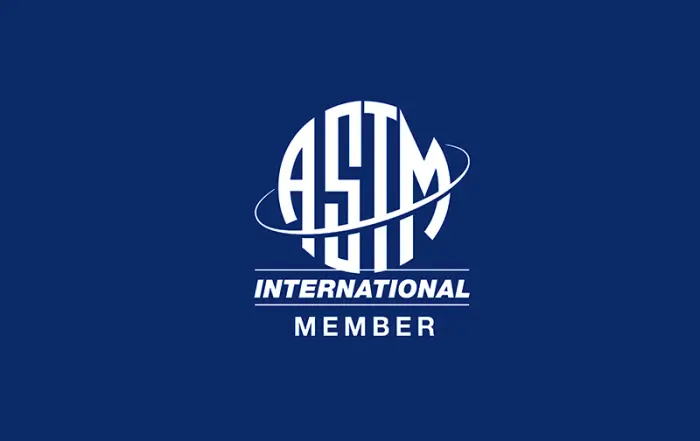
Comparing Calibration Standards: ISO 9060, ASTM, and IEC Explained
Introduction
In the field of solar irradiance measurement, accurate and reliable data is paramount. Calibration standards play a crucial role in ensuring that instruments like pyranometers provide consistent and precise readings. Three primary organizations have established standards for the calibration and classification of solar radiometers:
- ISO (International Organization for Standardization) with ISO 9060
- ASTM International (formerly American Society for Testing and Materials)
- IEC (International Electrotechnical Commission)

Understanding the differences and similarities between these standards is essential for professionals in the solar energy, meteorology, climatology, and environmental research sectors. This article aims to demystify these calibration standards, highlighting their significance and how they impact the selection and calibration of solar radiometers.
ISO 9060: Solar Energy — Specification and Classification of Instruments
Overview
ISO 9060 is an international standard that specifies the classification of pyranometers and pyrheliometers based on their performance characteristics. The standard was updated in 2018 to include new instrument categories and performance criteria.
Classification of Pyranometers
ISO 9060:2018 classifies pyranometers into three main classes:
- Class A (Secondary Standard)
- Class B (First Class)
- Class C (Second Class)
Each class has specific requirements for parameters such as:
- Response Time
- Zero Offsets
- Non-Stability
- Non-Linearity
- Directional Response
- Spectral Selectivity
- Temperature Response
- Tilt Response
Importance
ISO 9060 provides a comprehensive framework for:
- Instrument Selection: Helps users choose the right pyranometer based on required accuracy and application.
- Quality Assurance: Ensures that instruments meet minimum performance criteria.
- Standardization: Facilitates global consistency in solar radiation measurements.
Related Services at ISO-CAL North America
At ISO-CAL North America, we offer calibration services compliant with ISO 9060 standards. Learn more about our Pyranometer Calibration services.
ASTM Standards for Solar Radiometer Calibration
Overview
ASTM International provides several standards related to the calibration and testing of solar radiometers, including:
- ASTM E824: Standard Test Method for Transfer of Calibration from Reference to Field Radiometers
- ASTM G167: Standard Test Method for Calibration of a Pyranometer Using a Pyrheliometer
- ASTM G207: Standard Test Method for Solar Measurements Using Broadband Radiometers
Key Aspects
- Calibration Procedures: ASTM standards focus on the methodologies for calibrating radiometers, including indoor and outdoor techniques.
- Traceability: Emphasizes the importance of traceability to recognized reference standards.
- Application-Specific Guidance: Provides detailed instructions for calibrations under specific conditions.
Importance
ASTM standards are widely used in the United States and offer:
- Detailed Protocols: Step-by-step procedures for calibration.
- Industry Acceptance: Recognized by professionals in solar energy and materials testing.
- Complementary Framework: Can be used alongside ISO standards for comprehensive calibration practices.
Related Services at ISO-CAL North America
We adhere to ASTM calibration standards in our services. Find out more about our Radiometer Calibration Services.
IEC Standards: International Electrotechnical Commission
Overview
The IEC develops international standards for electrical, electronic, and related technologies. Relevant standards for solar radiometry include:
- IEC 60904-4: Photovoltaic Devices – Part 4: Calibration of Reference Solar Devices
- IEC 61010 Series: Safety requirements for electrical equipment for measurement, control, and laboratory use
Key Aspects
- Electrical Safety: Focuses on the safety aspects of measurement equipment.
- Calibration of Reference Devices: Provides guidelines for calibrating devices used as references in solar measurements.
- Compatibility and Interoperability: Ensures that equipment meets international safety and performance standards.
Importance
IEC standards are crucial for:
- Safety Compliance: Ensuring that instruments meet international safety requirements.
- Global Market Access: Products complying with IEC standards are generally accepted worldwide.
- Technical Specifications: Providing detailed technical requirements for equipment.
Related Services at ISO-CAL North America
Our calibration processes comply with IEC standards to ensure the safety and reliability of your instruments. Learn about our commitment to Standard Compliancy.
Comparing the Standards
Scope and Focus
- ISO 9060: Primarily focuses on the classification and performance criteria of pyranometers and pyrheliometers.
- ASTM Standards: Provide detailed calibration procedures and methodologies.
- IEC Standards: Emphasize safety requirements and calibration of reference devices.
Application
- ISO 9060 is ideal for selecting instruments based on performance classes.
- ASTM Standards are useful for conducting calibrations and ensuring traceability.
- IEC Standards are essential for safety compliance and technical specifications.
Compatibility
These standards are often used in conjunction to achieve comprehensive calibration and compliance:
- An instrument may be classified according to ISO 9060, calibrated following ASTM procedures, and meet IEC safety standards.
Why These Standards Matter
Ensuring Accuracy and Reliability
Adhering to these standards ensures that:
- Measurements are Accurate: Critical for performance analysis in solar energy systems.
- Data is Reliable: Essential for research, weather forecasting, and climate studies.
- Instruments are Safe: Compliance with safety standards protects personnel and equipment.
Compliance and Certification
- Regulatory Requirements: Meeting these standards may be mandatory for certain projects or funding.
- Quality Assurance: Demonstrates a commitment to high-quality measurements and practices.
- Market Acceptance: Instruments and data that comply with international standards are more widely accepted.
How ISO-CAL North America Supports Compliance
At ISO-CAL North America, we understand the importance of these standards and offer services to help you comply:
- Multi-Standard Calibration Services: We provide calibration that meets ISO 9060, ASTM, and IEC standards.
- Expert Guidance: Our experienced staff can help you navigate these standards to ensure your instruments meet all necessary criteria.
- State-of-the-Art Facilities: Our fully equipped calibration lab utilizes the latest technology for precise calibrations.
Additional Resources
- Definition and Importance of ISO 17025: Learn about the general requirements for the competence of testing and calibration laboratories.
- Solar Radiation Measurement: Understand the fundamentals of measuring solar radiation accurately.
- What is a Pyranometer?: A detailed explanation of pyranometers and their applications.
Conclusion
Understanding the differences between ISO 9060, ASTM, and IEC calibration standards is essential for selecting the right instruments and ensuring accurate solar irradiance measurements. Each standard serves a unique purpose, and together they provide a comprehensive framework for the classification, calibration, and safety of solar radiometers.
At ISO-CAL North America, we are committed to helping you navigate these standards and providing calibration services that meet all your compliance needs. Our expertise ensures that your instruments deliver precise, reliable data, whether you’re involved in solar energy production, meteorological research, or environmental studies.
Contact Us
For expert calibration services compliant with ISO 9060, ASTM, and IEC standards, contact ISO-CAL North America today. Our team is ready to assist you with all your solar radiometer calibration needs.



